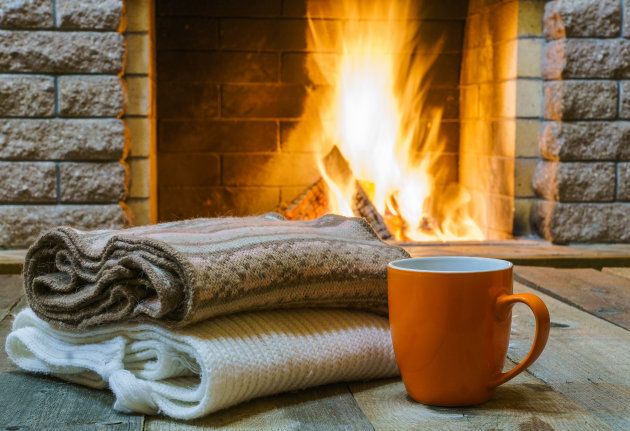10 Smart Ways To Keep Warm During Loadshedding

10 Smart Ways To Keep Warm During Loadshedding. The past couple of days have been the coldest this year, more so in Johannesburg and surrounding areas. A few days ago, Gauteng Weather warned residents to brace themselves for prolonged wintery conditions. Sadly in most cases when it’s very cold, power outages become more frequent. Loadshedding has been one of the problems that South Africans have had to deal with for so many years.
It is not cool to be left out with no electricity during a cold weather, but you can always find smart ways to be warm while still waiting for things to go back to normal. Here are 10 ways you can keep yourself warm during a power outage.
1. Use Gas
Gas stove, heaters, and other gas appliances that don’t rely on electricity is a good investment. These appliances help keep everyday life going without interruption. The cost of purchasing a gas heater easily justify the money it will save you in the long run. Gas heaters in particular are portable which means you can easily heat up your home by moving it around. Having a gas stove is also a great way to save on energy costs. It heats up faster and you can continue to cook even when loadshedding kicks in.
2. Drink Warm Liquids
Coffee, tea, and hot chocolate are the perfect treat for a chilly day. These are common and efficient ways to warm the inside of your body. If you have a portable gas burner, prepare these beverages to give your body the extra warmth it needs during a power outage. As you do, it is important that you remember to read the safety instructions. Drinking and eating warm liquids is important to ensure your body temperature remains at a healthy level.
3. Cook
For those with a gas oven, baking and cooking can be a great way to restore the heat within your home without the use of power. This can also act as a means of killing two birds with one stone as not only will you be preparing yourself something to eat, you’ll more importantly be warming up your space.Preparing warm foods like soup can also help to keep you toasty even after the oven has been turned off.
4. Do Some Exercises
Physical activity is a great way to get your heart rate up and more importantly get your body warm. In the event your home loses power, you can use exercise to heat things up for a time. This won’t even require extended activity as something as simple as a few sets of sit-ups, squats, or even jumping jacks can help you start beating the cold. And bundling up in several layers of clothes or extending the time in which you workout can further help you warm yourself up. A chilly temperature may be a welcome change as you try and cool down from the exertion.
5. A good Old Fire
If you’re lucky enough to have a fireplace, this will serve you well. A well-positioned fireplace can heat up an entire home for the cost of a few blocks of wood and a match. A fire is a source of warmth as well as a means of cooking if electricity is in short supply. So have a braai for dinner and keep warm around the coals at the same time. If you don’t have a fireplace in the house do not despair. Just like back in the day, you can always set up fire in your yard, and warm up your body for a few hours.
6. Layer Up
Keeping warm without electricity is easier said than done, but here’s a way to keep warm without really having additional cost implications; layer your clothing and bedding. The air trapped between the layers will retain body heat and keep you warm for longer. Also wear thermal underwear, a couple pairs of socks, several shirts, and a hat that covers your ears. This will make it harder for heat to escape and keep you much warmer. Also wear a coat and gloves every time when you’re outside.
7. Use A Hot Water Bottle
There’s nothing worse than an ice cold bed when it’s time to go sleep. Electric blankets have become common place in households and have been spoiling us for years. But loadshedding has taught us that we should always have plan B. The old faithful hot water bottle is another way to keep the cold at bay, during power outages. The cost of heating will still be marginal when compared to running an electric blanket throughout the night. You have to be safe though, more so when around young children.
8. Huddle In One Small Room
Pick a small bedroom (preferably one with as few windows as possible) and have your whole family gather there. Close the door and cover the vents to trap the body heat generated by everyone. If possible, pick a room on the south side of the house so the sun’s rays can warm the room naturally. Also, if you’re dealing with a wind coming out of the north, you don’t want to be on that side of the house.
9. Close Curtains at Night
As the sun goes down, so does the temperature, which means your home may get colder during the night time hours. If your windows have curtains, use them to ensure your home is staying as warm as possible without power. Curtains provide extra protection from the cold air seeping through the glass or possible leaks in windows. If not all of your windows have curtains, don’t worry, you can use blankets to block excess cold air from entering your home. Fasten the corners of the blanket around the window to act as a curtain.
10. Nighttime Preparation
At night a cold house without power can feel even colder. And for those who may be preparing to go to sleep, helping to promote the warmth that keeps things from getting too frigid will make falling asleep that much easier. In addition to several layers and possibly some socks, throw a few extra blankets on your bed. This will help you remain toasty for the nighttime stretch even if the house doesn’t have power. It is also important to sleep on the higher levels of the home because the heat in the house rises, making those rooms warmer than the ones on the lower floors.




